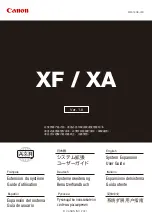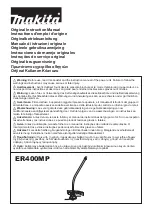
P a g e
|
16
ENERGIZER
BATTERY
MANUFACTURING
VERSION
1.2
3.4
‐‐
Multi
‐
Battery
Applications
In
some
situations,
a
higher
voltage
or
an
increased
performance
level
is
desired
for
a
certain
application.
Zinc
Air
batteries
can
be
arranged
in
series
or
in
parallel
as
needed.
Devices
that
use
more
than
one
Zinc
Air
Prismatic
battery
introduce
additional
design
considerations.
An
air
plenum
and
air
access
is
required
for
each
battery,
and
these
can
be
independent
or
shared.
Additionally,
stacked
batteries
require
space
above
the
air
hole
side
of
each
battery.
If
two
batteries
are
stacked
with
the
air
hole
sides
facing
each
other,
then
a
single
air
plenum
can
be
used.
3.5
‐‐
Recommended
Cutoff
Voltage
The
recommended
end
of
life
for
Zinc
Air
batteries
is
at
0.9
volts
where
essentially
all
available
capacity
has
been
used.
Below
0.9
volts
additional
chemical
reactions
may
take
place
in
the
battery
which
can
lead
to
increased
potential
for
gassing
and
leakage.
Energizer
recommends
that
devices
are
designed
to
prevent
the
battery
from
being
discharged
below
0.9
volts.
This
can
be
accomplished
preferably
by
a
complete
disconnect
of
the
battery
circuit
or
by
using
a
low
voltage
battery
warning.
3.6
‐‐
Fuel
Gauging
Zinc
Air
Prismatic
batteries
have
a
relatively
flat
discharge
curve
compared
to
existing
Alkaline
solutions,
with
the
discharge
curve
sloping
more
at
increased
discharge
rates.
This
can
be
seen
in
Figure
4
and
Figure
6
.
Although
the
relatively
flat
discharge
curve
makes
the
Zinc
Air
system
more
challenging
to
fuel
gauge
with
conventional
voltage
‐
only
measurements,
the
flat
voltage
profile
helps
make
device
performance
consistent
throughout
the
life
of
the
battery.
A
more
sophisticated
algorithm
incorporating
additional
measurements
that
are
tailored
to
the
specific
application
may
be
necessary.
This
is
similar
to
what
is
required
for
Lithium
Iron
Disulfide
and
rechargeable
Nickel
Metal
Hydride
batteries.


































